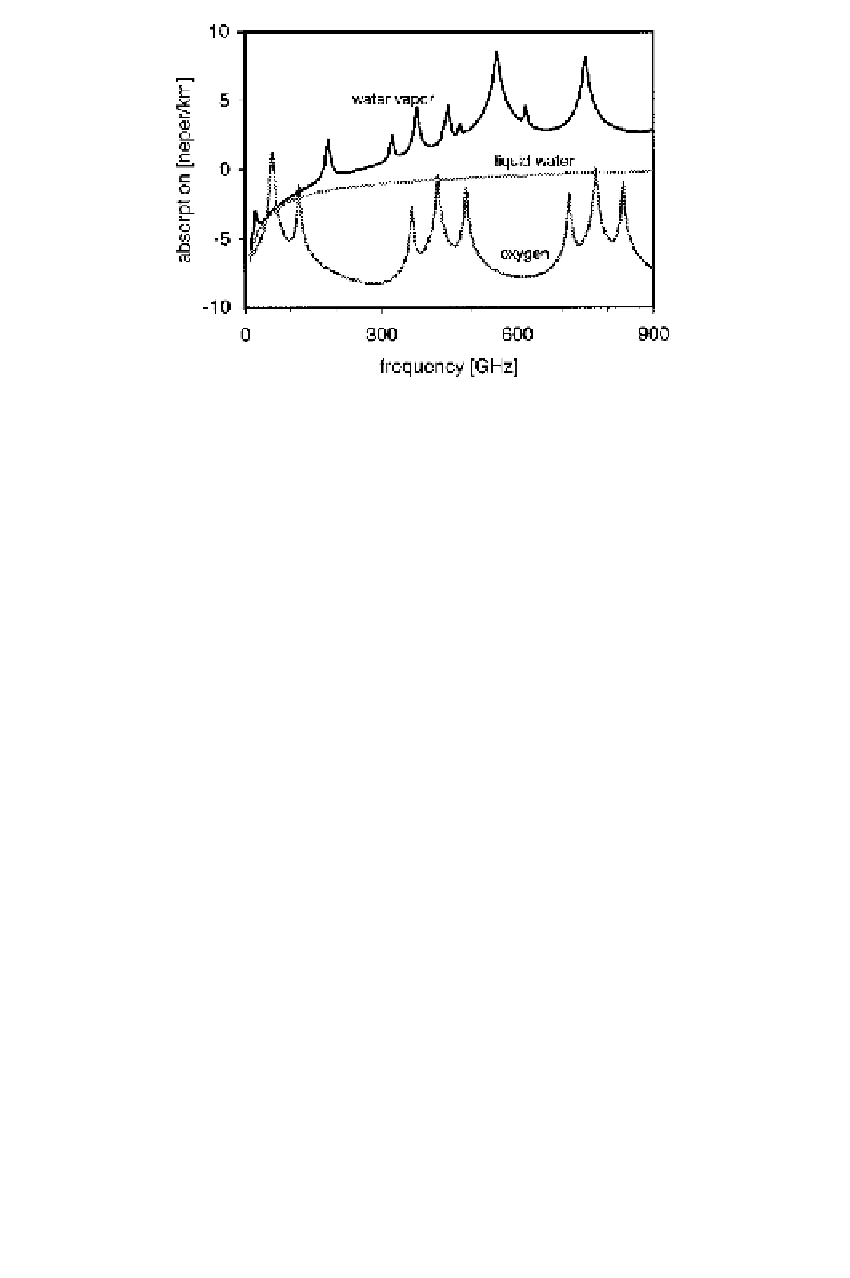Global Positioning System Reference
In-Depth Information
1
2
3
4
5
6
7
8
9
10
11
12
13
14
15
16
17
18
19
20
21
22
23
24
25
26
27
28
29
30
31
32
33
34
35
36
37
38
39
40
41
42
43
44
45
[20
Fi
gure 6.8
Absorption of water vapor, liquid water, and oxygen between 10 and 900
GHz.
Lin
—
-1.
——
Nor
PgE
of 1013 mbar. The line of liquid water (suspended water droplets) is based on a water
density of 0.1 g/m
3
. The absorption used in the radiative transfer equation (6.47) is
the sum of the absorption of the individual molecular constituencies, i.e.,
+ α
lw
f, T ,
ρ
lw
+ α
ox
(f, T , p,
α = α
wv
(f, T , p,
ρ
wv
)
ρ
wv
)
(6.51)
[20
The absorption units are typically referred to as neper per kilometer. The absorp-
tion unit refers to the fractional loss of intensity per unit distance (km) traveled in
a logarithmic sense. That is, an absorption value of 1 neper/km would imply that
the power would be attenuated by 1
/e
fractional amount over 1 km given that the
absorption properties remained constant over that kilometer. A neper is the natural
logarithm of a voltage ratio and is related to the
dB
unit as follows:
20
ln
(
10
)
neper
dB
=
≈
8
.
686 neper
(6.52)
The line profiles contain other maxima, as seen in Figure 6.8. A large maximum for
water vapor at 183.310 GHz is relevant to water vapor sensing in airborne radiometry.
The liquid water absorption increases monotonically with frequency in the microwave
range. Oxygen has a band of resonance near 60 GHz. The oxygen absorption is well
modeled with pressure and temperature measurements on the ground; the absorption
is small compared to that of water vapor and nearly constant for a specific site because
oxygen is mixed well in the air. The profiles of Figure 6.8 refer to a temperature of
15°C, a water vapor density of 10 g/m
3
, a pressure of 1013 mbar, and a liquid water
density 0.1 g/m
3
.
Since the absorption of oxygen can be computed from the model and ground-based
observations, it is possible to separate its known contribution in (6.47) and invert













































